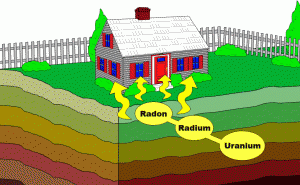 In recent years, high levels of radon have been found in the soil all over the country, leading radon to be labeled as a major contributor to lung cancer. In fact, the Environment Protection Agency has deemed January National Radon Month. New Jersey has had plenty of reports for a high levels of radon, so it’s important to look at the information below.
In recent years, high levels of radon have been found in the soil all over the country, leading radon to be labeled as a major contributor to lung cancer. In fact, the Environment Protection Agency has deemed January National Radon Month. New Jersey has had plenty of reports for a high levels of radon, so it’s important to look at the information below.
Many new homes can be built with radon-resistant features. It’s wise to ask your New Jersey home inspector or contractor if they are using the EPA’s recommended approach to construct a home with these features. If your house was already built prior to purchase, ask the realtor if the home was built with radon-resistant techniques. Knowing ahead of time that you’re taking every precaution can save you a lot of money and your life.
Not all new homes will have the following features; factors to consider are types of foundation and the construction requirements. There are five different techniques to use to declare a home radon-resistant.
- Gas Permeable Layer. For homes built with casement and slab-on foundation, this layer is placed to let the soil gas move about under the house, protecting and preventing radon from entering the foundation and into the home.
- Plastic Sheeting. On top of the gas permeable layer and under the slab layer, plastic sheeting seams are placed, further preventing radon from intrusion into the house.
- Sealing and Caulking. If there are openings in the foundation floor, sealants and caulk will be used to close off the gap, limiting the opportunity for gas soil to seep in.
- Vent Pipe. To properly vent your home and emit any gases from staying inside, a PVC pipe or 3-4 inch gas-tight pipe will be placed from the gas permeable layer to the roof.
- Junction Box. Vent fans are used to push gases out of the home, but when the fans are not working properly, home owners may not be aware. A junction box is a separate electrical box placed in an attic to make it less complicated to install a vent fan. An alarm will sound when the box has indicated the venting system is not working correctly.
Not only can these systems save lives, but for new builds, it is much more cost friendly to have a system in place during construction than having to renovate later on. Plus, radon-resistant features also make a home more energy efficient.
Remember, radon-resistant features are not a 100% guarantee against radon. It is still recommended to have a radon test conducted to be sure your home is a safe environment.
(Information courtesy of EPA – http://www.epa.gov/radon/pubs/hmbyguid.html#4.)
